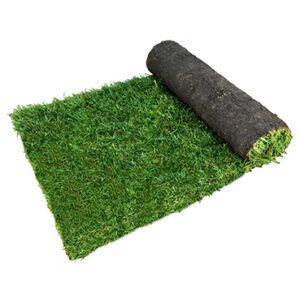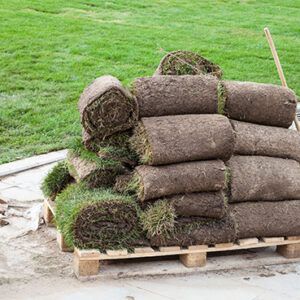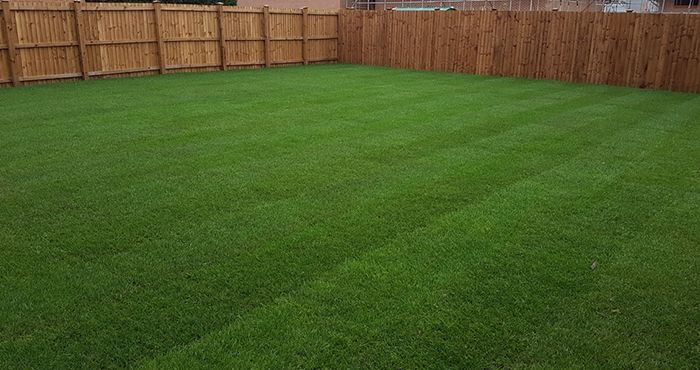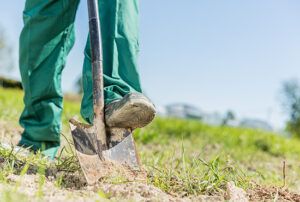What our clients think
Let us help you
Waterbeach, Cambridge,
UK (Main Office).
01223 864 703
info@cambridgegardenservices.co.uk
Lawn Care, Lawn Care Problems, What is Moss?
To successfully remove a moss problem, it is important to identify the primary cause and remove it or reduce its impact. Moss will thrive in areas of excessive moisture shade and poor turf quality.
Left unchecked, moss will increase, reducing the grass’ ability to thrive and will eventually “choke” out the grass completely. Moss is able to lay dormant in a lawn in dry conditions for long periods, but as soon as moisture is present again in the Spring or Autumn it will come back to life.
Why have I got moss in my lawn?
Usually moss is prevalent in lawns either due to excessive moisture or weak turf. These in turn are caused by a number of different factors as below:
What can be done to reduce moss?
The first thing to do is to try to identify the cause of the moss problem. If it is due to shade from trees, it is possible to remove lower branches or thin out the tree. If it is due to excessive moisture, then hollow tine aeration will help to improve the surface drainage.
If that is the problem then deep scarification is what is required. One of the easiest ways to reduce the incidence of moss is to prevent the lawn from getting long over the winter months. Grass rarely stops growing in the winter nowadays so it is important to keep cutting it.
Dealing with the moss that is already there is the next issue. As moss develops from the autumn through to spring, it is important to treat it at these two times. Firstly autumn but more importantly in the spring when moss is likely to be at its most prevalant.
To successfully remove a moss problem, it is important to identify the primary cause and remove it or reduce its impact. Moss will thrive in areas of excessive moisture shade and poor turf quality.
Left unchecked, moss will increase, reducing the grass’ ability to thrive and will eventually “choke” out the grass completely. Moss is able to lay dormant in a lawn in dry conditions for long periods, but as soon as moisture is present again in the Spring or Autumn it will come back to life.
Lawn Weeds
There are many types of lawn weeds or broadleaved weeds as they are sometimes referred and can leave a lawn looking very unsightly indeed.
They tend to produce flowers and seed heads at different times of the year ruining the uniform green of a lush well maintained lawn.
Weeds are generally, as with moss, an indicator of a weak turf but they can even be a problem in a well maintained and established lawn. They are usually easier to eradicate than moss.
Why have I got weeds in my lawn?
Weeds seeds will be carried into a lawn from a number of different sources: from birds over head, cats, dogs or other mammals that roam freely or from the people carrying them on their cloths or footwear. A seed will develop into a full blown weed unless unchecked. Some weeds are low growing and will be unaffected by the action of a lawn mower such as Lesser Trefoil and so spread until dominating a lawn.
What can be done to reduce weeds?
Cambridge Garden Services use an herbicide that has more than one active ingredient and so will kill a broad range of lawn weeds. We are usually able to reduce by more than 70% the amount of common weeds in our lawn. Weeds are best treated when they are actively growing, which is usually any time from April through to June and then again in September and October. Hand weeding can be a very difficult task and in some cases, such as dandelion, can actually worsen the weed problem. Some are a little more troublesome but we are confident that we are able to correctly identify them and reduce or control your lawn weed problem completely.
Pest and disease control
There are many types of pests and diseases that can attack your lawn and if these are not dealt with quickly then your beautiful, lush green grass can be destroyed very quickly. Below are some of the most common problems that lawns face and details of how to treat them, if you think your lawn has a problem but you are unsure as to the cause your friendly local expert will be happy to help.
Mowing
When making a choice as to which lawnmower is most suitable for your lawn there are a number of factors to take into account:
How often should I mow my lawn?
Your lawn should be mowed as regularly as you can do it, at least once per week during the main growing seasons of April – June and Sept – October. This can be relaxed during the height of summer if a drought ensues as the growth will slow and during the winter months again when the rate of growth slows.
It is, however important not to let the grass get too long at any time of the year, including winter, as this will reduce the quality significantly, increase the likelihood of moss invasion and reduce the aesthetic appearance of the grass. Do not be frightened to mow your grass in the winter if it is getting long and the ground is not waterlogged or frozen.
Scarifying
What is it?
Scarifying is a process perhaps best described as a mechanical raking of the lawn; its primary purpose is to remove thatch from the lawn although it has associated benefits as well. The machine used has a series of sharp tungsten blades that rotate at high speed and cut into the turf in a vertical manor. The depth can be adjusted to remove as much or as little as required. This machine and process should not be confused with the typical machine available on the domestic market, which is more of a lawn rake, has much less power and limited depth penetration.
Why does my lawn need scarifying?
A lawn that has developed a large amount of thatch or moss needs to be scarified to remove as much of this material as possible allowing the grass space to grow. Scarifying should be carried out at a time when the grass is growing actively to allow it to recover from this rigorous process, usually autumn through to spring time. It is advisable; although not essential to carry out scarifying before a fertiliser treatment as this will greatly speed the rate of recovery from the process.
How often does my lawn need scarifying?
All lawns are different in their characteristics and it is therefore very difficult to predict how often to scarify a lawn. There are a number of factors that will affect the frequency required. If a lawn contains large amounts of thatch and / or moss it may need a number of treatments to reduce the level to be manageable. Different grass types tend to produce more thatch than others and therefore need scarifying more frequently. As a general rule Cambridge Garden Services advise that a lawn should be scarified between every 1 and 3 years but for specific advice please discuss with your lawn manager who will be able to look at your individual circumstances. Also view the Thatch page
Hollow Tine Aeration
Grass, as most things living on our planet need air to enable their natural growth. Grass plants need air to their roots. Aeration is simply a process of improving the lawn ability to access air through its root system and therefore grow healthily. Cambridge Garden Services Lawn Care feel that Hollow Tine Aeration is by far the most effective way of aerating a lawn. The machine used will remove approx 45 cores per square metre of turf leaving many holes all over the lawn. Each core removed is 12mm thick and 100mm long, approx. This process allows the soil surrounding the holes to swell slightly improving the soils ability to pass air / moisture and nutrients to the plant roots.
Why does my lawn need aerating?
Over time most soils will become compacted, squashing the particles together and reducing the grasses ability to grow well. This
compaction will itself cause a number of problems, it will increase the likely hood of the lawn becoming flooded or water logged. Compacted soils are much more likely to become infested with either weeds such as daisy´s or moss. The roots are unable to access
the nutrient they require so the grass tends to be thin weak and pale in compacted soils. If thatch is a problem in a lawn then the best way to reduce its impact on the turf growth is by Hollow tine aeration.
How often does my lawn need aerating?
A lawn cannot be over aerated as long as it is not damaged, the more often the better. As a rule Cambridge Garden Services tend to suggest that it is carried out between every 1 and 3 years but as all soil types / lawns and situations are different it is really something that needs to be discussed individually with your lawn Manager.
Turfing
The best times to lay turf are between March-June and September-November. Have a good look at the area in which the turf will be situated. When planning where to lay the turf try and leave a border near fences and walls as it is hard to cut the lawn there.
If your garden is full of weeds they will need to be treated several weeks before the lawn is laid with a good biodegradable weed killer. One that will kill the root as well as the leaves such as Roundup or Tumbleweed. I know from experience that thistles in particular are a real problem when it comes to coming through the turf.
Before the lawn is down you have an opportunity to get rid of them – take it! Or else you will be continuously standing on them with your bare feet as you admire your garden on a cool summers evening. Not the best thing. Have a look on the product label to see when it will be safe to lay the turf after the ground has been treated.
You should make sure that any rubble is raked off the surface of the ground prior to any turf being laid. Loose stones and building rubble will prevent the turves roots from making contact with the soil and could make the turf die in patches. The top soil should then be thoroughly rotivated down to about the first 6 inches to aerate it properly. It is then raked level and gently treaded.
Turf arrives!

You should order 5% more turf than needed, this is normal and should be included in the quote as this excess will be lost when then lawn is laid and trimmed.

Apart from exceptional circumstances the turf should arrive the same day it is to be laid. From the moment it is dug up on the ‘turf farm’ until 4 weeks after it is laid in your garden there is a constant battle to keep it moist enough.
Failure to do means it will suffer and may die. Therefore, sitting rolled up on your drive or in the back of a truck all night is bad. If its impossible to lay the turf on the same day then it should be rolled out on your driveway (not your prepared surface) and watered to keep it moist.
Laying the turf
Failure to do means it will suffer and may die. Therefore, sitting rolled up on your drive or in the back of a truck all night is bad. If its impossible to lay the turf on the same day then it should be rolled out on your driveway (not your prepared surface) and watered to keep it moist.
The turf should be firmly but carefully tapped down using the back of a spade to ensure that the roots and the soil are in good contact. If there is an obvious dip in the profile add or remove soil as necessary. Avoid using odd small sections of turf near the edges of the lawn as these will dry out faster than you can water them and probably die.
After laying the first row, place a plank on the turf and use it to carry the next row of turf to the bare areas of soil. Do not walk on the turf or soil whilst you are laying it as it can be damaged. Stagger the joints of the turf whilst laying; as you see bricks in a wall. Once finished the edges can be trimmed. The correct tool being a half-moon spade.

During the first four weeks the lawn should be watered constantly. The first watering should soak the cultivated layer of top soil the turf is laid on. This is very important, as until the root system binds with the soil the turf will lose moisture at an alarming rate and can die quite rapidly if abused.
Avoid excessive walking on the turf especially at the early stages and after about two weeks give the lawn its first cut. Try and cut about one quarter of the length of the grass during each trim at this stage, progressively taking more off as the lawn matures. Just think that a grass plant partly lives via photosynthesis through its blade and chopping all of that off will severely injure or kill the plant and hence your lawn. At best it will go a very unattractive yellow for a few days. A sign that you need to get the lawnmower out more often.
Regular cutting of the grass also tends to reduce the number of weeds that grow in the lawn. Also, take note that trimming a little and often, combined with a lawn fertilizer. applied twice a year is the difference between having something that looks like a park football pitch and a bowling green.
Top Turf Killers
Cutting the lawn properly
Lawns are the most work intensive item you will have in your garden. During the summer months they can need cutting at least once a week.
But is cutting the lawn as simple as pushing the mower up and down the lawn several times avoiding cutting through the electric cable? Here are a list of do’s and don’ts for lawn cutting:.
Advice on Cutting your Lawn
Cambridge Garden Services lawn care
will remove the cores from the lawn and dispose of them. To leave them to breakdown is not recommended as they are unsightly, will probably contain moss spores and / or weed seeds as well as thatch, and as most soils in Britain are clay based the cores are likely to take years literally years to breakdown properly.


